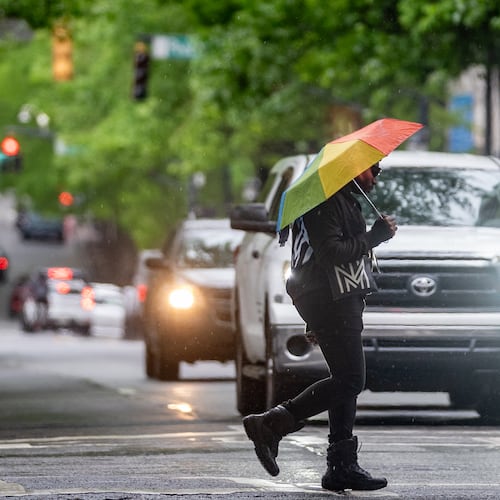Trees provide many benefits, but during Georgia storms, they can fall and create a dangerous situation.
Before a stong storms hit, it’s crucial for residents to keep an eye out for trees that could topple.
The following guide will help you keep your trees from falling (when possible) and know what to do if it does happen.
Why do trees fall?
Trees can fall during storms for a variety of reasons, including:
Winds: Winds can uproot a tree, with the tree trunk acting as a lever. This is a greater problem for tall trees, because the force that’s applied to the roots and trunk is greater as the tree’s height increases, according to Scientific American. This can also happen if a tree were previously in a more forested area, protected by other trees that have since been cut down (to create a new housing lot, for example).
Rain: When the ground becomes saturated from large amounts of rain, trees can topple more easily. The more wet the ground is, the less wind it will take to make it fall.
Ice: During an ice storm, the weight of ice can increase the weight of branches by 30 times.
Lightning strikes: Lightning strikes can cause a tree to fall or weaken it so it's more vulnerable in future storms.
Health issues: A tree that's unhealthy is more likely to fall.
How to reduce the chances that a tree will fall
There’s no guarantee that, under the right conditions, a tree won’t fall. However, Greg Levine, co-executive director of Trees Atlanta, offered the following tips to help increase the chances your trees will survive a storm:
Check for signs of fungus: Fungus growing on the roots or root flare (where the trunk widens as it transitions to the root system) can weaken the tree, making it more likely to fall in a storm.
Don’t compact tree roots: Parking on tree roots or rolling over them can cause compaction, which weakens the roots and the tree.
Use mulch: Mulch helps create healthy soil and a good environment for "critters" that will promote soil and tree health.
Don't "top" your trees: Cutting main branches back to stubs creates structural issues that can weaken the tree.
Take care when redoing utilities: If you're having a water line replaced or an irrigation system put in or replaced, don't dig a trench near the root system of your trees. This can cause tree roots to be accidentally cut.
Look for multiple trunks: Big trees can develop two trunks that will push against each other, causing cracks that let moisture seep in. This can make the tree rot.
Have trees pruned when needed: Eliminating dead branches helps keep trees healthy.
Consult a certified arborist: If you think a tree is damaged, consult a certified arborist for advice so you can avoid a bigger problem. It's especially important to have trees near your house checked.
What to do after a tree falls
If a tree has fallen after a storm, take the following steps:
Be careful: If the tree hits a power line, the line may be knocked down and should not be touched.
Call your insurance company: If you have a fallen tree on your house, fence or other structure, call your insurance company before having the tree cleared away.
Call a tree removal company: Many offer 24-hour emergency service and can do the job safely and quickly.
Credit: AJC
About the Author
The Latest
Featured
